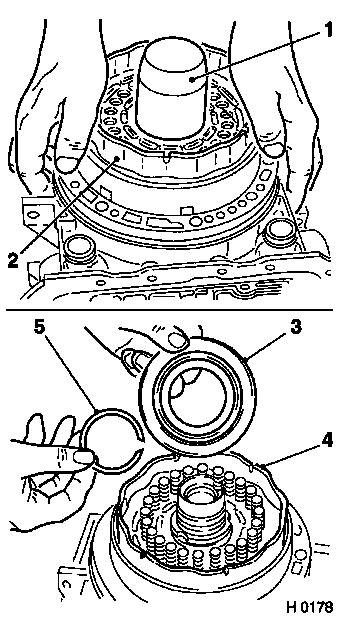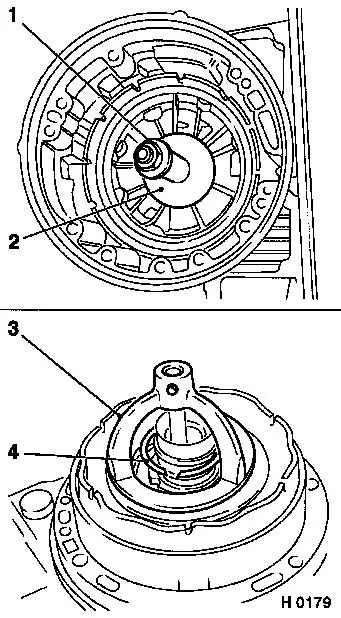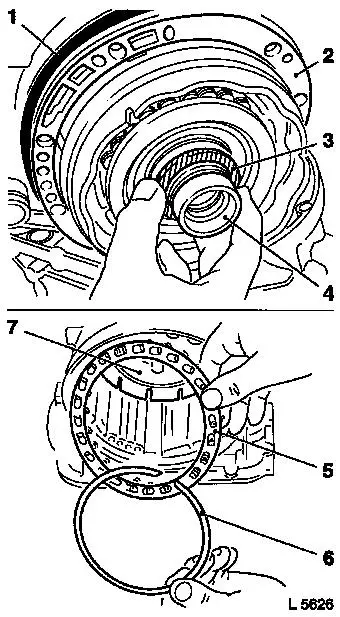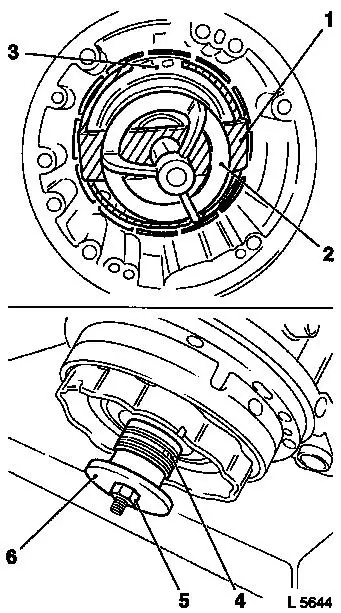Omega B
|
Function, Hydraulic
The control valves in the steering are switched to provide hydraulic counterpressure, "the direct hydraulic reaction", under certain conditions.
When steering the vehicle at a standstill and when driving at speeds below 20 km / h (1 2.5 mph), there is no hydraulic reaction. The force required for the steering wheel is determined only by the resistance of the torsion bar in the valve head and is very low.
When the steering wheel is turned clockwise, the right control valve piston (6) moves downwards and the left control valve piston moves upwards. This guides the pressure fluid into the right cylinder chamber (1 2) and over the right non - return valve (8) into the right reaction chamber (4).
Schematic diagram of hydraulic circuit of Servotronic.
1 Vehicle speed signal 2 Servotronic control unit 3 Electro - hydraulic converter (converter valve) 4 Right reaction chamber 5 Left reaction chamber 6 Right control valve piston 7 Left control valve piston 8 Right non - return valve 9 Left non - return valve 10 Right throttle 11 Left throttle 12 Right cylinder chamber 13 Left cylinder chamber
When parking:
When parking, the converter valve (3) is closed and the pressure fluid flows further over the throttles (1 0 and 1 1) to the left reaction chamber (5). The closed left non - return valve (9) prevents the fluid from flowing into the depressurized left cylinder chamber which is connected with the return (13). As both reaction chambers (4 and 5) are subject to the same pressure conditions, there is no counter - effect (no reaction) in the steering wheel. The steering is easy to actuate.
When driving at medium speeds:
When driving at medium speeds, the converter valve (3) is only partially open. The decreased back - pressure is transferred to the left reaction chamber (5), while the right reaction chamber (4) is fully pressurized. The counter - effect acting on the control valve pistons (6 and 7) corresponds to the pressure difference in the two reaction chambers.
When driving at high speeds:
When driving at high speeds, the converter valve (3) is completely open. The pressure fluid flows from the pressurized right cyl]inder chamber (1 2) via the right non - return valve (8), the right throttle (1 0) and the converter valve (3) to the return. The right reaction chamber (4) is thereby fully pressurized, while the left reaction chamber (5) is depressurized. Counterclockwise torque is produced, which attempts to return the control valve piston to the neutral position (maximum reaction). The steering is more sluggish.
|
||||





